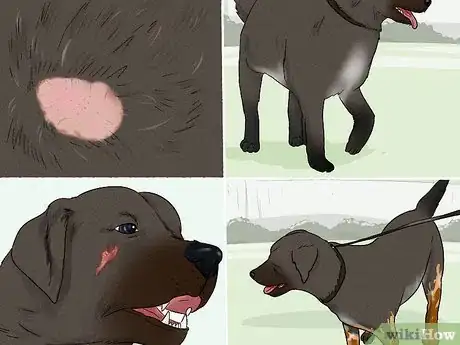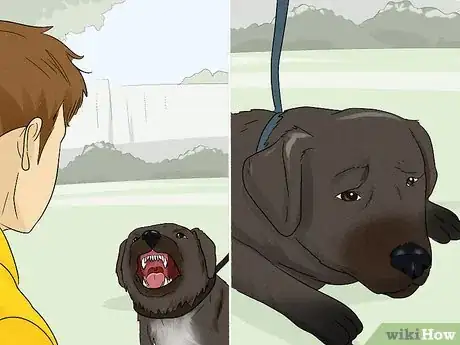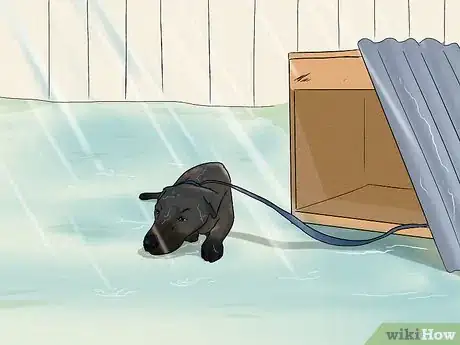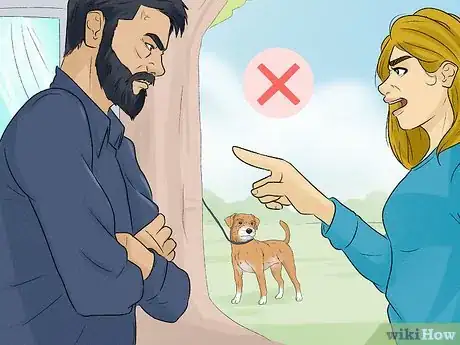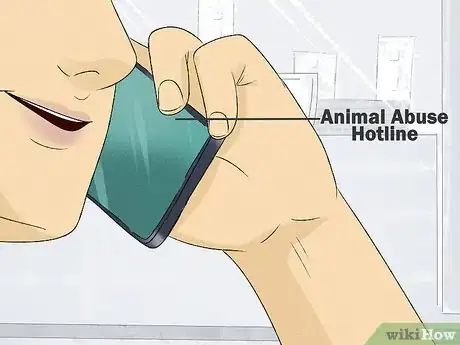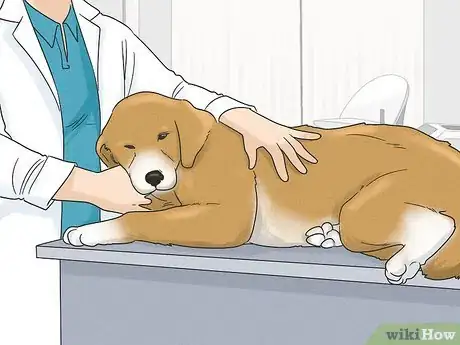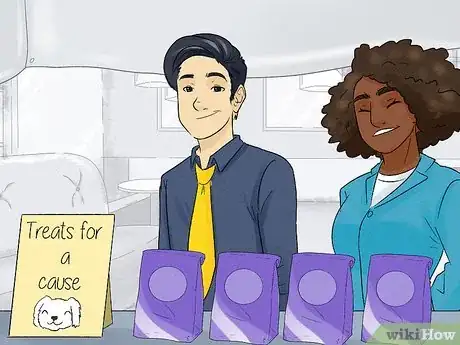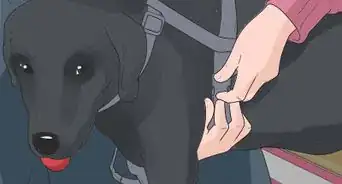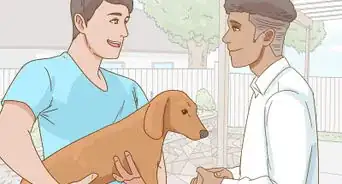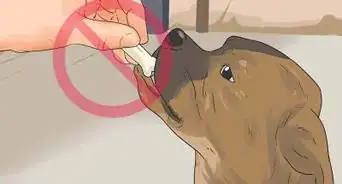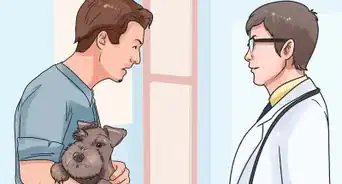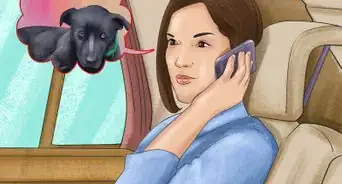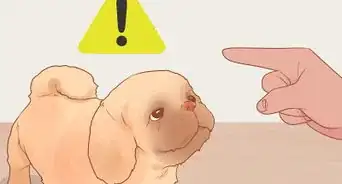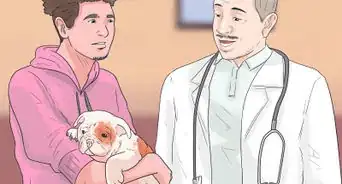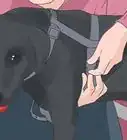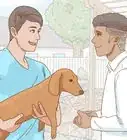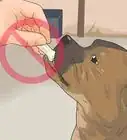wikiHow is a “wiki,” similar to Wikipedia, which means that many of our articles are co-written by multiple authors. To create this article, volunteer authors worked to edit and improve it over time.
This article has been viewed 18,567 times.
Learn more...
Animal abuse--it happens. Unfortunately, every year, thousands of abused dogs and cats end up dying as a result of prolonged or repeated animal abuse. Fortunately, however, you can be their voice and speak up for them. However, you must first consider removing the animal from the unsafe environment and contacting the police. Dogs, by far, are unfortunate enough to be one of the top animals most likely to be abused. If you can successfully remove a dog from their abusive home and get it to safety, you might be able to save a life before the abuse proves impossible to stop. Here's how to do it.
Steps
Identifying Animal Abuse in a Dog
-
1Identify the physical signs of abuse on a dog. Physical abuse, also called direct abuse or prolonged abuse, is the unlawful act or practice of physically using force on an animal; and not for illegitimate reasons. Physical abuse is considered the worst among any other form of abuse, because it can cause prolonged or long-term problems on any animal, including a dog. If you can identify the signs of physical abuse on a dog, you might be able to present this as helpful evidence to the court when suing an owner, making it more likely to be believed.
- Signs of physical abuse include, but are not limited to, large bruising anywhere on the dog's body that are clear and visible, scarring, marks that appear and reappear on a regular basis, or bald spots on the dog's fur that do not go away and constantly appear. If you suspect physical abuse, you should contact the Animal Abuse Hotline as soon as possible to get help, especially if you are repeatedly seeing it.
- A physically abused dog may also appear to be limping; in some cases, this is considered to be normal. However, if you suspect a dog is constantly limping on a regular basis, this will raise a red flag. Call for help; the longer you wait, the worse it becomes.
- Do not assume a dog isn't suffering from abuse just because a certain area looks safe to you. You might be missing the reality of the situation.
-
2Identify the mental/emotional signs of abuse on a dog. In the worst case scenario, a dog can be emotionally influenced by the abuse its owner inflicts, and unfortunately this is almost always the case with every abused animal. If a dog is influenced, it becomes more difficult over time to bring the animal back to reality. While not necessarily vital, it may help you to further assess the situation and get the dog out of there and to safety.
- Signs of mental/emotional abuse in a dog include: unusual or abnormal changes in a dog's impairment, excessive barking, and abrupt behavioral changes, such as prolonged aggression. Aggression, in this case, is very important, and should not be taken lightly.
- Prolonged or repeated aggression strongly signals a problem, even if a dog has not shown any type of aggression in the past. A dog can be emotionally driven from abuse to act differently and may begin defending its territory excessively. You should pay extra close attention to the dog's body language and visual impairment.
- An abused dog can also act frightened or scared whenever you or someone else comes near. If you suspect this, it will raise a red flag and indicates a huge problem. If the dog is being repeatedly abused, it will show excessive shyness and by all means should not be ignored.
Advertisement -
3Identify the environmental signs of abuse on a dog. Environmental, while not particularly as dangerous as the other forms of abuse, can still have a huge impact on an animal's health. Environmental abuse occurs when an animal is forced to live in unsafe conditions. In some cases, it may even influence a dog to respond differently.
- Environmental abuse typically is identified whenever an animal lives around an environment with poor or unstable conditions. This means that if you suspect this type of abuse on a dog, you should take it seriously; assume the dog is living in a poor environment.
- If you see any dog that is constantly being tied or chained up outside on a regular basis, even in inclement weather, that is a sign of environmental abuse and you should be able to report it immediately.
- Also note the signs of neglect; while not serious, it does pose a harmful effect. If you suspect the owner is failing to give an adequate supply of food and water to a dog, if the coat of a dog appears matted or tangled, if the dog looks extremely emaciated, etc. you should report it as soon as possible. If you can, take pictures from your phone or a camera to present as evidence.
Getting a Dog to Safety
-
1Do not confront the owner. In the worst case scenario, you may be tempted to defend an abused dog by yelling and putting the owner in his place, but don't. Not only is this method potentially dangerous and life-threatening, but the owner might view you as an obvious threat and use your own words against you in court. It is always better to report the owner to the police over the phone and let them handle it, rather than confronting the owner directly and risking your life.
- If you confront the owner directly, you are far more likely to be in immediate danger than anyone else. Don't consider the possibility, even if you believe the dog's life is at risk.
- Also be aware that if you choose to confront the owner directly, you may end up being forced into doing something you didn't expect.
-
2Call Animal Abuse Hotline. This is a program designed to help you remove an abused animal from its home and to safety, like a local shelter. Ensure that locals will come to help you get an abused dog to safety; wait for them and be patient. By doing this, you will be using a different approach without actually managing to get in harm's way.
- Do not, under any circumstances, attempt to rescue the dog yourself. Not only is it dangerous, but you might end up facing a huge fine for trespassing. Just wait for officials and don't risk it. This is especially true if the owner of the abused dog is a man, a predator, or is otherwise threatening.
- After the officials arrive, you can direct them to the abusive owner's house and seek out the abused dog to rescue it. Do not go alone; there's safety in numbers.
- Encourage the officials to be as quiet as possible to avoid surprising the dog. Do not go inside the house; this is just plain common sense.
- If the police are able to detain the owner, have them come as well. In the unlikely event of the owner noticing your presence, you'll be glad to have the police around.
The Aftermath
-
1Take the dog to the vet. This is a big one; the vets are going to check for worms, prescribe medications, weigh the animal, etc. Ensure that you have the medical records up-to-date. The vet will also give shots to the animal, if needed.
- If you choose to adopt the dog, you will have to be prepared for the long term commitment. Buy it toys, bowls, dog food, water, etc. and make sure you have plenty of room in your home for it to roam.
- If you choose not to adopt the dog, it will be sent to a local animal shelter to be adopted by someone else. Congratulations, though; you've just saved a life!
-
2Start an animal abuse fundraiser. If you love animals, you will probably be tempted to contribute to the environment.
- Get plenty of people to bake goods, make money, and have fun. You can also check out books on animals at your local library.
Warnings
- When rescuing multiple dogs, be especially cautious and always receive assistance. Learn to use common sense.⧼thumbs_response⧽
- As stated above, do not confront the owner. While you may be tempted, doing this will only put your life at risk. Keep in mind that you are better off reporting the owner to the police rather than being forced into doing something with the owner you didn't want.⧼thumbs_response⧽
- If a dog uses repeated aggression, don't risk a bite. If possible, get extra assistance.⧼thumbs_response⧽
- If you are bitten by a dog, go to the hospital ASAP. Better safe than sorry.⧼thumbs_response⧽
